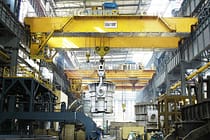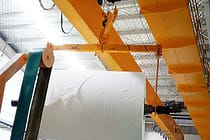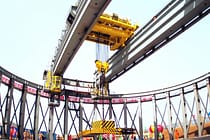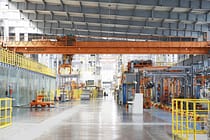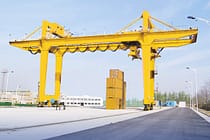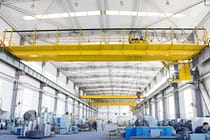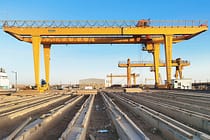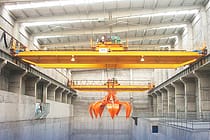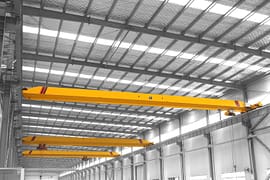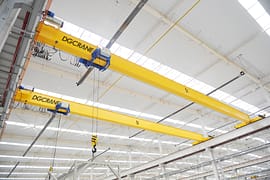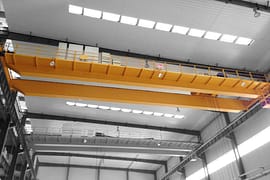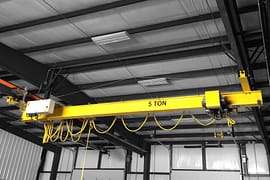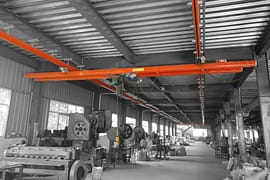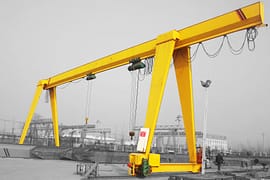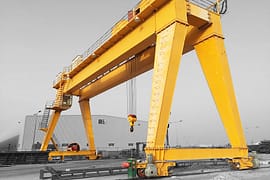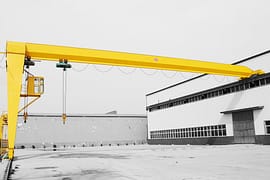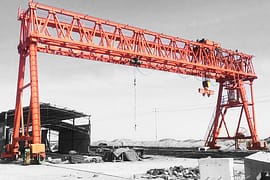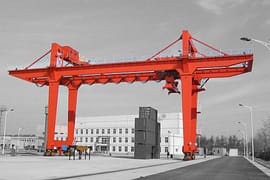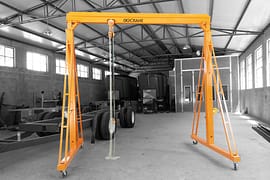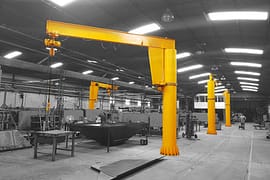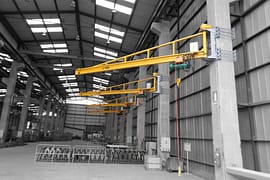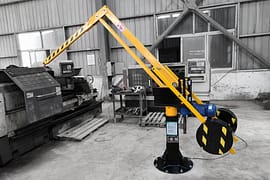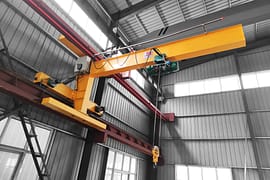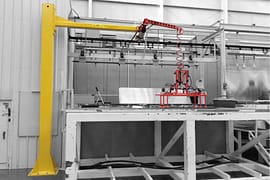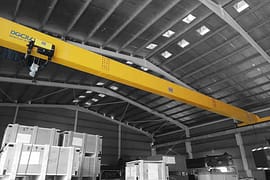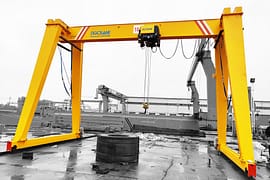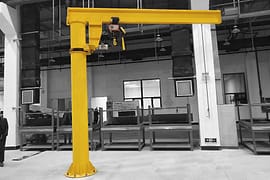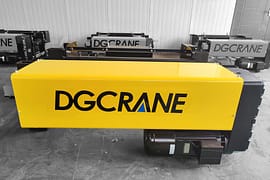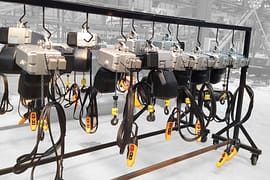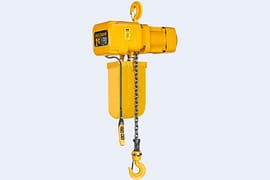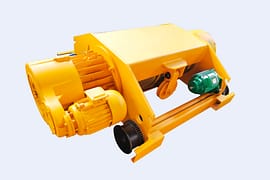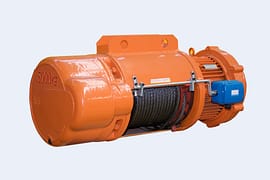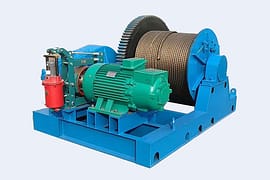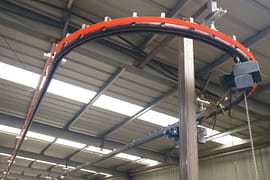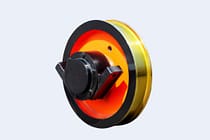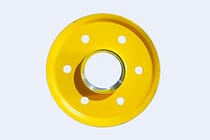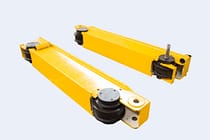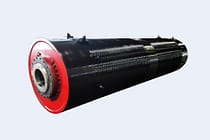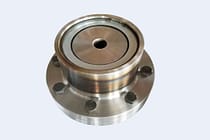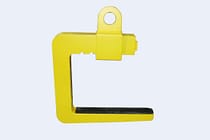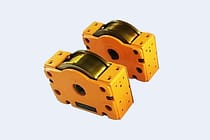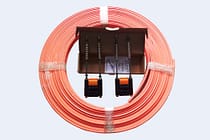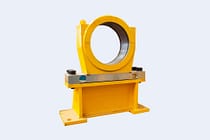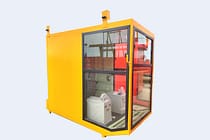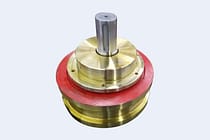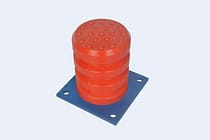Why Using Mixed Capacity Bridge Cranes On The Same Runway
Mixed-capacity bridge cranes are an excellent solution for companies looking to leverage their system capability and reduce bridge dead weight. That's because using heavier capacity runways with multiple smaller capacity bridges can help to leverage the system's capability and provide multiple lift solutions within one coverage area.

MIXED CAPACITY BRIDGE CRANES EXPLAINED
Using mixed-capacity bridges on the same runway will not only extend your coverage area, it will also provide maximum productivity using one full system. Mixed-capacity systems allow multiple bridges to be used on a system, without de-rating bridges or using bridge buffers (for more on bridge buffers, see options below). Bridges are sized for an individual rated load, while runways are sized for the combined weight of all loads. For instance, a 2,000-pound capacity runway can run two 1,000-pound bridges or four 500-pound bridges. Not only does this leverage system capability and offer more flexibility, it also reduces bridge dead weight. Workers can use multiple bridges side-by-side to transport loads without overloading the system. Mixed-capacity bridges also weigh less than a single bridge system, making them extremely ergonomic and easy to move.
It is important to note, however, that the sum of capacities of the bridges cannot exceed the capacity of the runway without the addition of buffer assemblies. The runway's capacity is defined as the live load that can be lifted by the system. The Workstation Bridge Crane is designed with an allowance of 15 percent for the weight of the hoist and the trolley. That means that a 1,000-pound bridge includes an allowance of up to 150 pounds to cover the combined weight of the hoist and trolley. Overloading your system can cause serious system failure, injury to workers, and even death. If in doubt, consult with your crane manufacturer or qualified engineer for more information.
MIXED-CAPACITY BRIDGE CRANES AND SAFETY
If you're thinking about using multiple mixed-capacity bridges with one runway in your facility, there are a few numbers you should also take into consideration. To start, the length of your runway is largely unlimited, making it possible to cover the length of your entire facility. But, keeping bridge lengths to a minimum is another good way to ensure an ergonomic design for your system.
As a general rule, the less dead weight an operator has to move, the better. For this reason, “less is more” when it comes to bridge cranes. Short bridge lengths are better for higher-cycle production areas, whereas longer bridges are often used for lower-production cycles or maintenance areas. Most engineers also recommend lower-capacity systems for increased productivity. That's because when you buy too much “capacity”, you also have to move extra bridge “dead weight”, which decreases efficiency.
OTHER OPTIONS
Although one runway can handle multiple mixed-capacity bridges, there are also other viable options to consider—depending on the needs of your operation and facility. Bridge buffers and intermediate end stops are two such options.
BRIDGE BUFFERS
Using a regular mixed-capacity system, mixed-capacity bridges can run the entire length of your runway without fear of overloading it. However, this means you have to buy a runway that is heavy enough to support all of your bridges under load at one time. If cost is a factor, bridge buffer systems can ensure proper use of the system without overloading for less cost than mixed-capacity systems. Here's how they work:
Using a bridge buffer system, bridges are sized for an individual rated load, and runways are sized for the heaviest individual load. This means that the runway will use the same track series as the largest bridge. This differs from the mixed-capacity system, because the runway capacity isn't determined by all of your bridges added together, but by the heaviest bridge traveling along your runway. This still allows you to install one runway system throughout an entire facility, providing increased flexibility and productivity. But, instead of having to purchase a VERY heavy runway, you can purchase one rated for your single heaviest bridge. That's because movable bridge buffers separate the bridges.
Bridge buffers are suspended from two trolleys in the runway to create a predetermined minimum distance that bridges can operate from one another. Essentially, bridge buffers are designed to roll in the runway tracks between the bridges to keep them apart and avoid overloading the runway's capacity. Using bridge buffers not only ensures that workers aren't accidentally overloading the system; it also ensures that two bridges can't come into contact with each other, especially while under load. While bridge buffers can be an excellent solution to keep cost low and improve system flexibility, they do present one disadvantage. Buffers utilize space, which creates a moving “dead” area between the bridges, therefore slightly limiting your coverage. Whether or not to use a mixed-capacity system or a bridge buffer system rests entirely on the needs of your operation and facility.
INTERMEDIATE END STOPS
Intermediate end stops accomplish the same goal as bridge buffers, with a slightly different design. Similar to bridge buffers, the bridges are sized for an individual rated load, while the runway is sized for the heaviest individual load. This means, the runways are the same size as the largest bridge. The bridges are totally separated by internal stops or bumpers. Using intermediate end stops is advantageous because—like bridge buffers—they allow use of smaller runways. This makes them very cost-effective compared to regular mixed-capacity systems. Intermediate end stops also create fewer “dead” spots in the system. But, they do limit the travel of each bridge on the runway, and they require extra supports to eliminate potentially overloading the system. Intermediate end stops are installed at certain intervals to prevent more than one bridge from operating on certain parts of the runway. This means, each bridge is isolated into a separate span, thereby minimizing runway track capacity.
Improving the flexibility of your system is extremely advantageous for productivity, but it does require careful consideration regarding system design. Whether or not you decide to use a regular mixed-capacity bridge crane system, bridge buffers, or intermediate end stops depends on your facility and the overall needs of your operation. Installing an appropriate overhead crane system can greatly improve productivity and safety in any environment, but installing the perfect system for your unique needs will ensure a cost-effective approach that works for you every time.
